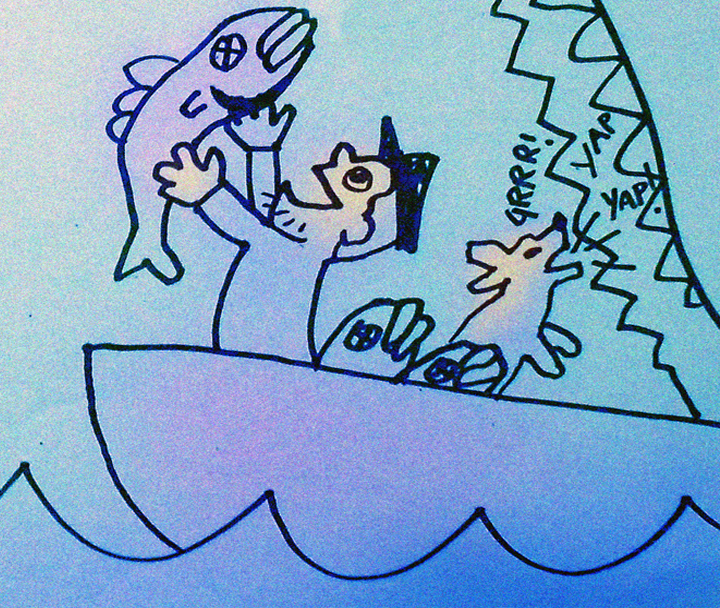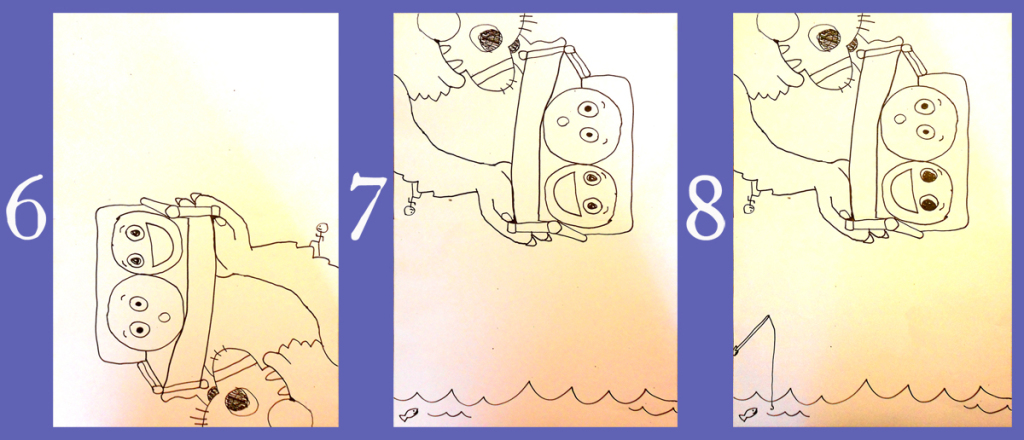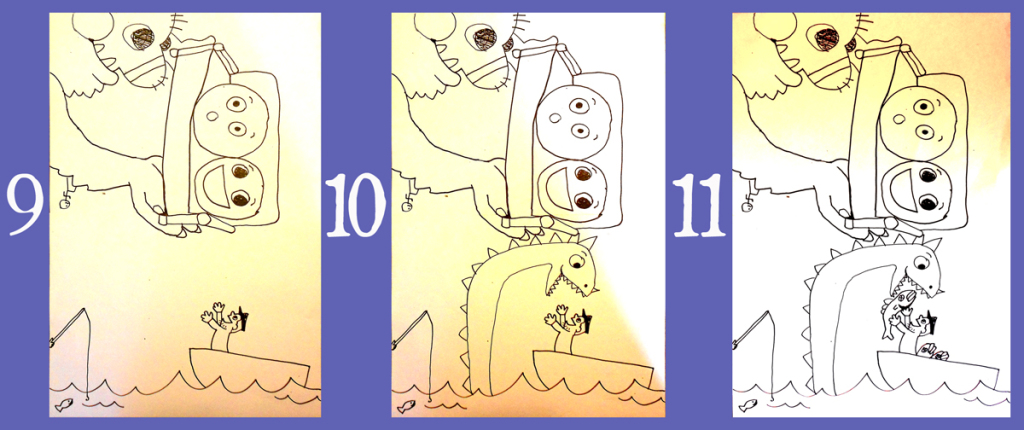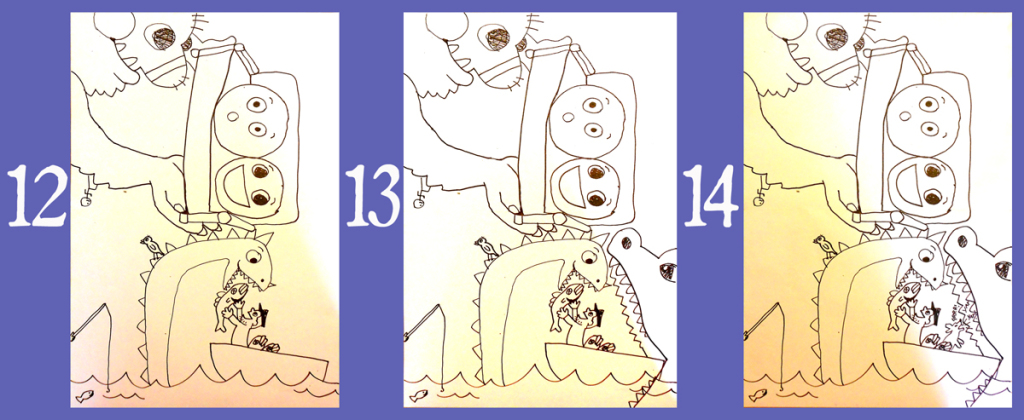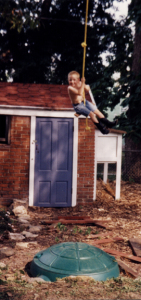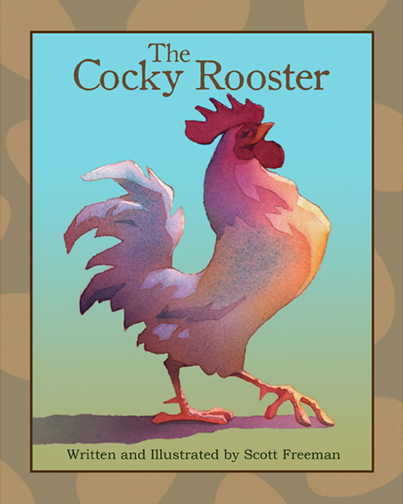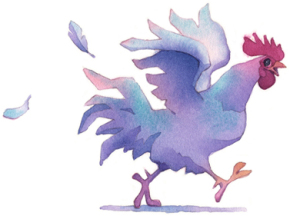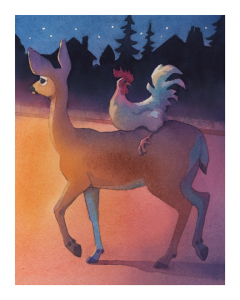From the get go, I intended to steer clear of politics in this blog. But I want to share a video today that I hope will be inspiring to people of any political stripe. I think Katy Faust is a breath of fresh air, and her perspective has very much to do with families and, specifically, children. So I hope you feel my decision to share this is appropriate. Katy is certainly an inspiration to me.
Because life is all about love.
And speaking of love, that’s the theme of my soon-to-be-released book, Bear Island. I had hoped to release it in April, but I’ve simply had too much on my plate. It won’t be long though – I’m starting the very last watercolor illustration today.
Here is a rough shot of the illustration that I finished last night
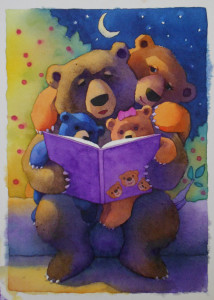 But back to Katy Faust.
But back to Katy Faust.
This post is going out the day after oral arguments were made at the Supreme Court regarding same sex marriage. Anticipating this, several weeks ago, Katy submitted a letter to the court, entitled, Dear Justice Kennedy: An Open Letter from the Child of a Loving Gay Parent. I felt Katy’s contribution was brilliant, articulate, insightful, and compassionate.
Katy is uniquely positioned to speak to the subject as a person who was raised by her mother and her mother’s long-term female partner. She openly loves her mom and credits her with being an exceptional parent. Yet as Katy came of age and had children of her own, as she watched her own husband within their family dynamic, the complementary and irreplaceable role of both a mom and dad in child-rearing became increasingly clear to her. Looking back on her own childhood, despite the love and care that surrounded her, she couldn’t deny that she had a longing for her mom and dad to love each other, and her, under one roof as a family, as all children do.
Katy now contends that “children are the reason government has any stake in this discussion at all.” She disagrees with the “wrongful message that all children need is two stable loving adults, which is statistically not the case.” She states, “When a child is placed in a same-sex-headed household, she will miss out on at least one critical parental relationship and a vital dual-gender influence. The nature of the adults’ union guarantees this.” Katy continues:
Like most Americans, I am for adults having the freedom to live as they please. I unequivocally oppose criminalizing gay relationships. But defining marriage correctly criminalizes nothing. And the government’s interest in marriage is about the children that only male-female relationships can produce. Redefining marriage redefines parenthood. It moves us well beyond our “live and let live” philosophy into the land where our society promotes a family structure where children will always suffer loss.
(From Dear Justice Kennedy.)
What is especially inspiring about Katy is the love she has for the gay community, and her willingness to reach out to people who consider her an enemy. To me she embodies the biblical admonition to speak the truth in love. I’m not talking about loving merely with thoughts or words, but with her time and actions. You’ll have to listen to the video to see what I mean.
Regardless of what the Supreme Court decides, Katy’s example will remain relevant to the church. The church as a whole hasn’t been very good at loving its gay neighbor, and yet, loving people is supposed to be the distinguishing mark of who we are and what we do. Whether or not the “marriage equality” movement actually believes their own accusations, what is most often said about opponents of the redefining of marriage is that they are hateful. Stated. Every. Single. Day. I don’t believe it’s true, but somehow they’re not feeling the love. We need to get better at this.
I stumbled across the following Youtube video of a TV show that I’d never heard of, interviewing Katy Faust. It’s 25 minutes long, but if you care about this issue, I think it’s definitely worth watching.
I hope you are enjoying the springtime. Hopefully, my next post will be announcing a new book release!



